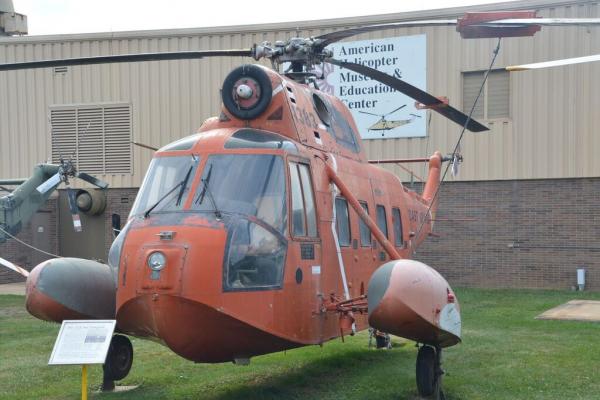
On July 6, 1960, the S-62 became the first American turbine-powered helicopter to be certified by the FAA for commercial operations. Also, it was the world’s first helicopter to be built with a watertight boat‑hull fuselage. The three‑bladed main rotor and two‑bladed tail rotor were driven by a single 1,250‑shp T58‑GE‑8 turboshaft mounted above the cabin and beneath the main rotor. In addition to the crew of three, the cabin could accommodate 10 fully-equipped troops. The main landing gear is semi‑retractable into the flotation gear, while the tail wheel is fixed.
The Sikorsky S‑62 was tested by the U.S. Coast Guard for the SAR role. An initial order for four HU2S‑1Gs resulted in February 1962, with that designation changing a few months later to HH‑52A. This helicopter replaced the HH‑34 in Coast Guard service with a total of 99 being procured before production terminated in 1970; 79 were still operational in 1981. These were replaced by the Aerospatiale HH‑65A Dolphin in the 1980s. No other U.S. service operated the HH‑52.
The Museum aircraft, named “Polar Star” and “Mom’s Taxi,” was in service from 1963 to 1989. A map of the entire 50 states is painted on the side of the aircraft showing all duty stations.
| Aircraft Specifications | |
|---|---|
| Passengers | 12 |
| Rotor Diameter | 53 ft |
| Fuselage Length | 44 ft 6.5 in |
| Maximum Speed | 146 mph |
| Cruise Speed | 139 mph |
| Height | 14 ft 2 in |
| Empty Weight | 4,903 lbs |
| Gross Weight | 8,100 lbs |
| Engine | 730 hp T58 GE 8B Turbo Shaft |
| First Flight | May 4, 1958 |
| Acquisition Source | National Naval Aviation Museum Loan |